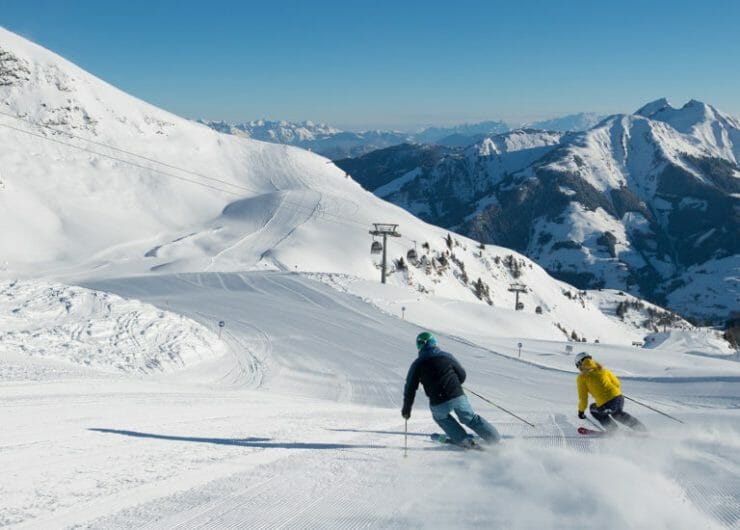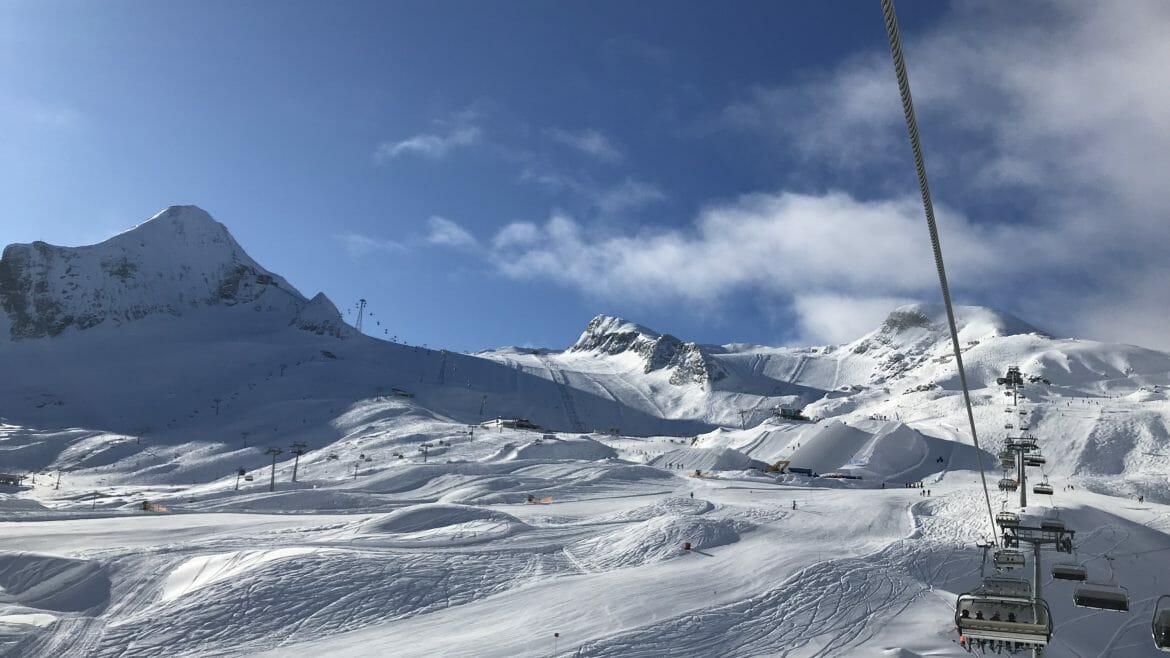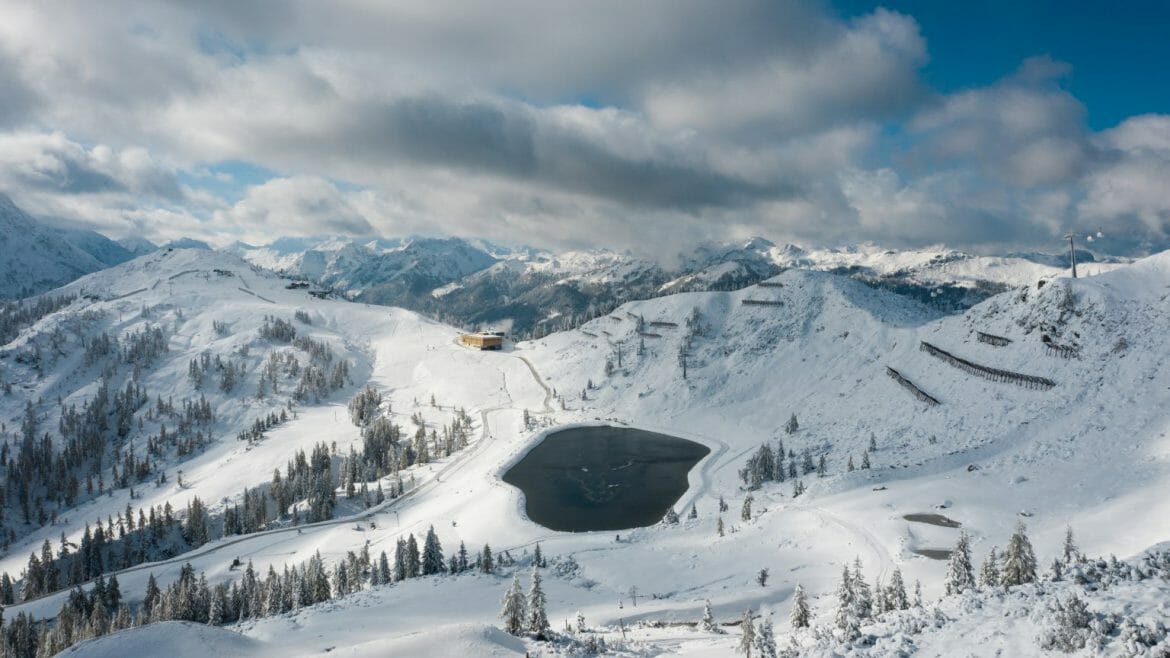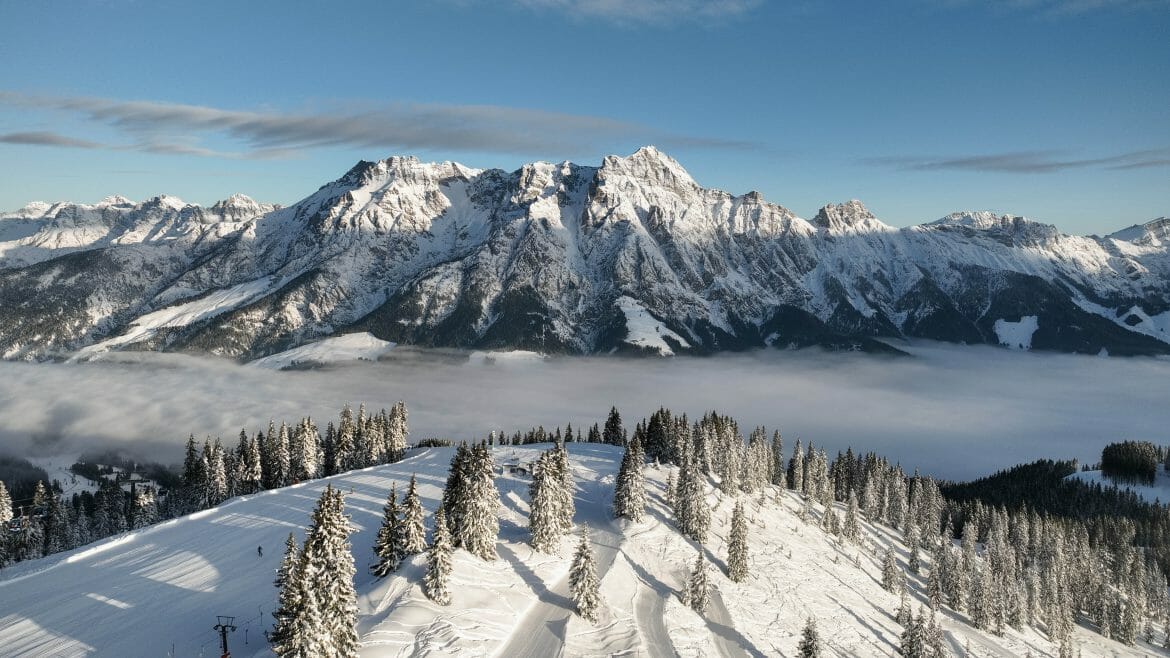
#1 Rauriser Hochalmbahn
The Rauriser Hochalmbahnen show how to make „green“ ski tracks in the white snow. After all, they are Austria’s first climate-neutral ski resort. First and foremost, they produce most of the electricity they need themselves. They are constantly working on new ideas to protect the environment and save energy. However, it is not possible to go completely without CO2 emissions. But the operators of the Hochalmbahnen are not satisfied with this and invest in so-called climate certificates to compensate. The greenhouse gas emissions caused by the company and the operation of the Hochalm lifts are offset by the purchase of a total of 400 climate protection certificates. These certificates are used to support a local river hydroelectric power plant in Brazil.

©SalzburgerLand Tourismus
#2 Schmittenhöhe Zell am See
A colourful flower meadow blossoms in summer where skiers make their turns on the slopes in the winter. This is not a matter of course. But at the “Schmittenhöhebahn” in Zell am See it is a clear statement of how much nature is appreciated. For years, pioneering work has been done – not only in terms of cable car, but also in terms of environmental protection. For example, the company is supplied with 100 percent green electricity from the Salzburg AG power plant. In addition, the “Schmittenhöhebahn” is the first cable car company in Austria to participate in the Eco Management Audit Scheme (EMAS), in which current innovations are recognised by an independent environmental auditor. By investing in state-of-the-art snowmaking equipment and high-tech piste equipment, efficiency is increased and energy is saved at the same time.

© SalzburgerLand Tourismus
#3 Klimaberg Katschberg
The Klimaberg Katschberg(“Climate mountain Katschberg”) region has set itself an ambitious goal in terms of climate protection. It wants to be CO2-neutral by the year 2030. So, the name of the region says it all. As a guest, you book a climate holiday to experience the sustainable concepts in all their different facets. This includes e-mobility and solutions for traffic reduction, climate protection areas on ski slopes and blossoming meadows for bees to preserve biodiversity, as well as plant-based “climate food”, which can be found on the menu in all partner restaurants.

© Tourismusregion Katschberg-Rennweg
#4 Kitzsteinhorn Kaprun
Already since 2003, the Kitzsteinhorn has been committed to implementation and thus also to ongoing controls within the framework of the high quality and safety standards according to ISO standard 9001. In the meantime, the company is triple ISO certified and was rewarded in 2011 with the “pro natura – pro ski AWARD” for its sustainable management. As a glacier ski area, the Kitzsteinhorn also serves as an open-air laboratory for several international science projects. Electricity from renewable energies has been a matter of course at the Kitzsteinhorn for many years. Some of the 100% clean electricity is even generated in-house. Thanks to the increased expansion of photovoltaic systems on the roofs of the operations and station buildings, the sun now supplies 400,000 kWh. According to the motto “Electricity in summer – snow in winter”, Gletscherbahnen Kaprun has its own hydroelectric power station with three turbines in operation during the summer months, which generate electricity from the meltwater. In autumn it becomes a pumping station and supplies water from the Kaprun high mountain reservoirs for snowmaking in a sustainable cycle. With the new, third turbine, 1.2 million kWh of annual energy can now be generated. Around 33 to 35 % of the energy required for the entire snowmaking system on the Kitzsteinhorn can be covered in this way. From the winter of 2023/2024, the entire snow groomer fleet of Gletscherbahnen Kaprun will run with reduced Co2 emissions thanks to fossil-free HVO diesel.

© SalzburgerLand Tourismus
#5 Snowspace Salzburg
Snowspace Salzburg also relies on renewable energy sources for sustainable, energy- and resource-saving skiing operations. Snow Space Salzburg Bergbahnen has set itself the goal of being climate-neutral by the 2025/26 winter season. In doing so, they forego financial compensation, but reduce actual emissions through: Use of green electricity, sustainability concepts for new facilities and slopes and offers for resource-saving arrival and departure of guests. Help is sought from scientific experts in the fields of environment, climate and biodiversity.
#6 Shuttleberg Flachauwinkl- Kleinarl
Another leading business in the region is the “Shuttleberg”, which gained the “Good Travel Seal” sustainability certification specifically for small and medium-sized businesses with 3 out of 3 stars and achieved a total rating of 94 out of possible 100 points. Green electricity, its own photovoltaic system for the ticket-hall-building in Kleinarl and even the development and testing of hybrid snow groomers are evidence here of a responsible approach to nature. Take a look yourself at the sustainability developements of the “Shuttleberg“.

©Shuttleberg Kleinarl Flachauwinkl
#7 The Green Road: Home of Lässig sets out on a road to climate neutrality
Saalbach Hinterglemm is on the road to sustainability. The region is being made even more sustainable in a transparent way- and full of determination. Photovoltaic systems on cable car buildings, air and geothermal heat pumps for heating lift stations as well as slope equipment garages and, of course, chemical-free artificial snowmaking are just a few points that are already contributing to sustainable skiing in Saalbach Hinterglemm. For the first time, wind turbines on the newly built mountain station of the Limberg 8er chairlift generate electricity to complement the photovoltaic systems. Did you know that water is not wasted in the snowmaking process, but only used? Or that the reservoirs have an important impact on flood protection? Information on laid-back mountain experiences and the “Green Road” to a sustainable destination can be found here.

© SalzburgerLand Tourismus

